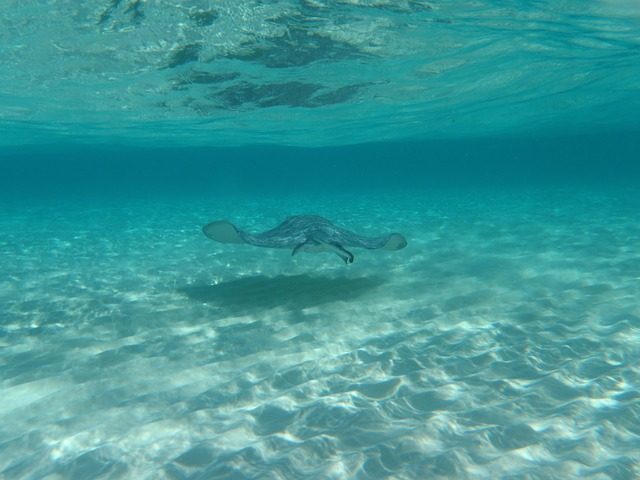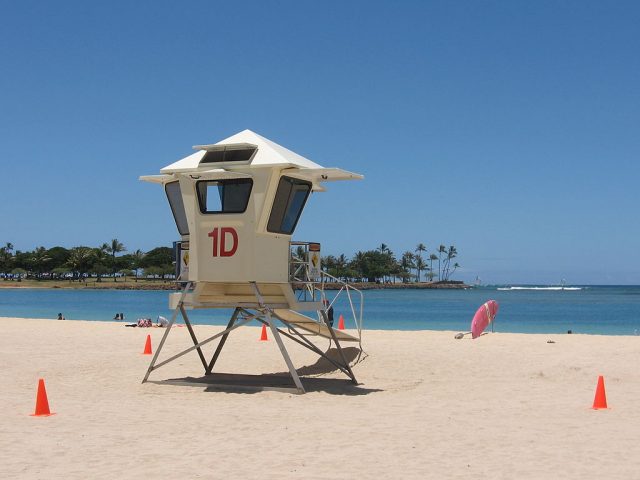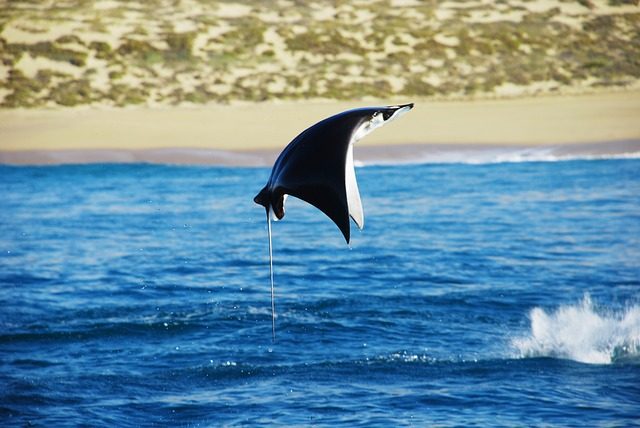Stingray Stings – how to avoid and treat them
Whether you are a frequent beach goer or a vacation visitor, being knowledgeable about stingrays is important. Although stingray stings are very unlikely to be fatal, it is important to know the proper steps of care to avoid infection and further injuries. Check out our guide below for proper steps to treating a sting.
How to Avoid Getting Stung
The best way to treat a stingray sting is to avoid them in the first place! It’s important to remember that the only reason rays sting is because they feel threatened. The ocean is home to thousands of wonderful creatures, and it is important to respect them and their home.

The classic tool that most people use to avoid being stung is called the “Stingray Shuffle”. Rays will sting you if they get stepped on, but they will simply swim away if you bump them with your feet. When you enter the water, shuffle your feet across the sand instead of picking them all the way up. This will minimize your chance of stepping on a ray.
It’s also good to know where stingrays like to hang out so you can avoid those areas altogether. Piers, jetties, and kelp covered surf are all areas that rays like to hang out. Don’t swim in these areas if you can avoid it, or use the “Stingray Shuffle”.
Initial Response

The first thing you should do if you think you have been stung by a stingray is exit the water. Try to stay as calm as possible and make your way out of the surf to the shoreline. If you are in an area with lifeguards on duty, ask a friend or bystander to get one. They will give you the proper care for your injury.
However, if you are at a beach without lifeguards on duty, you can deal with it yourself. The first thing you will want to do is check to see if the barb is still in your foot. Do not try to remove the barb yourself. Wait until you are in the care of a lifeguard and doctor to make sure the barb is removed properly. If the wound is bleeding, apply pressure to the wound to slow it down. However, be sure to not shove the barb deeper into your skin while applying pressure.
Pain Relief
The amount of pain varies greatly from the sting to sting, but it is safe to say that this one is going to hurt. Stingrays release a venom into your skin that is very toxic and highly painful. The best option for pain relief is to soak your foot in a bucket of hot water. Heat the water up as much as you can handle, but be sure to not burn yourself. Frequently switch out the hot water for new hot water to keep a steady temperature.

Taking a painkiller such as Advil is also an option if you have one. However, avoid taking Aspirin, as it will thin your blood and allow the toxins to travel with more ease.
Aftercare
After the barb is removed, be sure to carefully clean the wound to prevent any infections. Swelling is normal, and continuing to keep the foot in hot water will make it feel better. Staying off the injured limb on the day of the sting is highly recommended. As the pain goes away, be sure to continue to look for signs of infection such as increased swelling, redness around the wound, and increased pain.

If you have any comments then please drop us a message on our Outdoor Revival Facebook page
If you have a good story to tell or blog let us know about it on our FB page, we’re also happy for article or review submissions, we’d love to hear from you.
We live in a beautiful world, get out there and enjoy it.
Outdoor Revival – Reconnecting us all with the Outdoors





